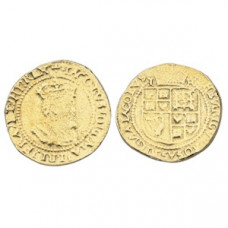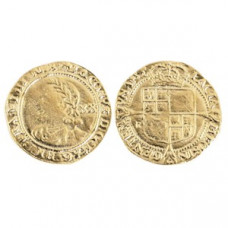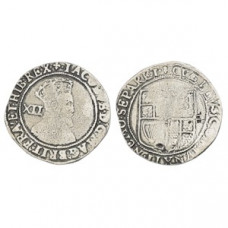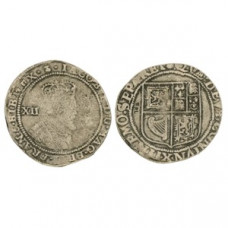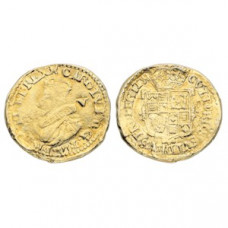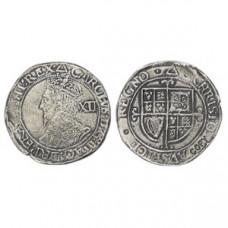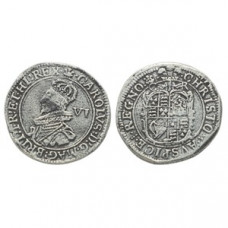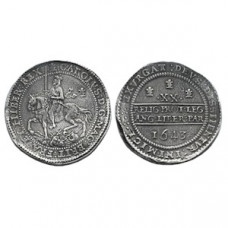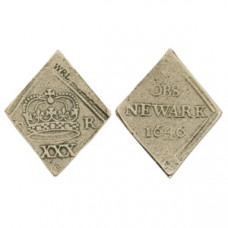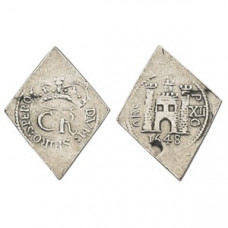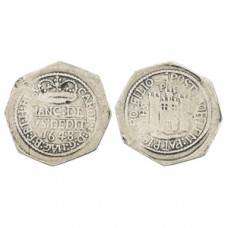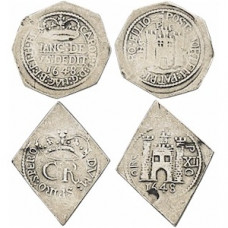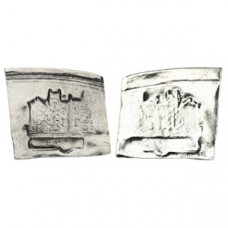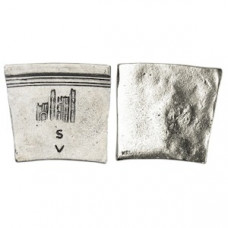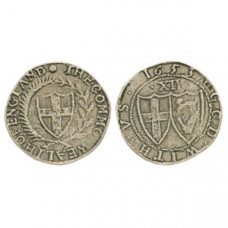Reproduction House of Stuart Coins
When James VI of Scotland acceded to the English throne, the royal titles and coat of arms altered on the coinage. New coins were added including the gold Unite, the gold Laurel and the rose-ryal.
In Charles I’s early reign some outstanding machine-made coins were produced, but could not be struck at sufficient speed to supplement hand hammering.
During the Civil War the parliamentary government continued to strike coins with Charles I’s name on until his execution. Coins were struck at a number of towns to supply the Royalists. Among the more spectacular pieces are the ‘Declaration’ coins struck at Shrewsbury and Oxford and the emergency coins, made from odd-shaped pieces of silver plate during the sieges of Newark, Scarborough and Pontefract.
After Charles I death coins were struck during the Commonwealth with English inscriptions. The short-run coinage of Oliver Cromwell were machine made until the Restoration in 1660.
Early in Charles II reign milled coinage was introduced. New gold coins were struck and they became known as ‘Guineas’ as the gold was imported from Guinea by the African Company (whose emblem was the Elephant and Castle). Good regal copper coinage was also introduced for the first time.
The remainder of the Stuart’s reign saw little change to the coinage, except for the bust of the monarchs.
Our reproduction and replica Stuart coins include Crown, Shilling and Civil War Siege coinage.
James I Gold Crown
Obverse: Bust of crowned James I facing right. Text around LACOBVS DG MAG BRIT FRAN & HIB REX (J..
£4.50
James I Gold Laurel
Obverse: Laureate bust of James I in armour left, value XX (twenty shillings) behind. Text separated..
£5.00
James I Shilling
Obverse: Bust of crowned James I facing right, XII to left of head. Text around LACOBVS DG MAG BRIT ..
£4.00
James VI and I Shilling
Obverse: Bust of crowned James I facing right, XII to left of head. Text around LACOBVS DG MAG BRIT ..
£4.50
Charles I Gold Crown
Obverse: Crowned bust of Charles I facing left, with ruff and armour nearly concealed with scarf, ma..
£4.50
Charles I Shilling
Obverse: Crowned and bearded bush of Charles I left, XII behind head. Large bust with stellate lace ..
£4.00
Charles I Sixpence
Obverse: Bust of Charles I in ruff with high crown with jewelled arches and with armour visible, lef..
£4.00
Charles I Declaration Pound
Obverse: Crowned, King Charles I on horseback riding left, holding upright sword. The horse is shown..
£12.00
Charles I Newark Siege Halfcrown
Obverse: Lozenge type with large royal crown between C R (Carolus Rex - King Charles). Below XXX (30..
£5.50
Charles I Pontefract Siege Shilling (Lozenge)
Obverse: Crown over the initials CR. Text around DMV SPIRO SPERO. Reverse: Castle gateway with ..
£7.00
Charles I Pontefract Siege Shilling (Octagonal)
Obverse: HANC DEVS DEDIT in two lines, crown above, 1648 below. Text around CAROL II D G MAG BE ET H..
£7.00
Charles I Pontefract Siege Pair
The Pontefract Siege pair consists of two rare Charles I Pontefract Siege Shillings, octagonal and l..
£12.00 £13.00
Charles I Scarborough Siege Crown, Type I
Obverse: Type I, large castle type showing the keep of Scarborough castle with windows, battlements ..
£10.00
Charles I Scarborough Siege Crown, Type II
Obverse: Type II Small castle type showing the three storied keep of Scarborough castle with windows..
£10.00
Commonwealth Shilling
Obverse: St. Georges Cross in shield encircled by wreath. Text around THE COMMONWEALTH OF ENGLAND. S..
£4.50

